Protected public transport stops provide a separated area for passengers to stand when they exit or enter a tram or bus. People are protected from motor vehicles by a kerb and fences.

Known risk
A car travelling at 40-60 km/h can kill or seriously injure a person. This is a known risk, which is why VicRoads reminds drivers to stop when a tram stops:
Problems in Yarra
Many streets in Yarra do not have protected tram stops, such as on Bridge Road and Victoria Street. Cars can still easily pass a tram that has stopped to allow passengers to disembark, which imposes a hazard with a risk of death or serious injury.
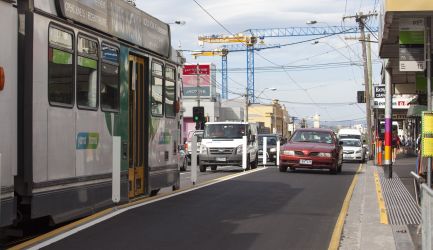
Solutions
A better design solution is to require trams and cars to share a single lane. This means that cars can’t pass or overtake the tram, thus eliminating the possibility of hitting disembarking passengers. Instead, only the bicycle lane intersects with passengers. However, a person on a bicycle does not impose a life threatening hazard on tram passengers, because the kinetic energy of a person and bicycle at 20 km/h is very little.
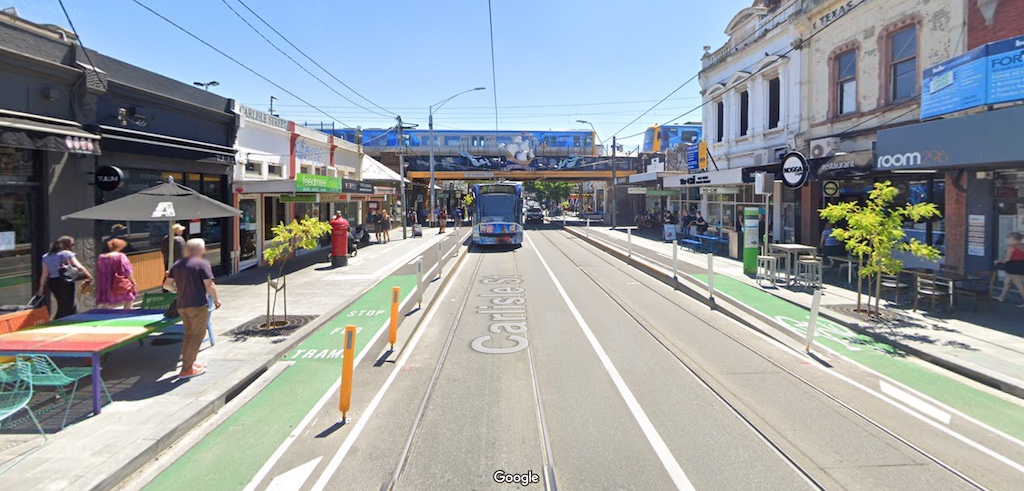
Example from Copenhagen
Copenhagen is regarded as a great city for walking, cycling and public transport; and has bus stops which overlap with the protected bicycle lane:
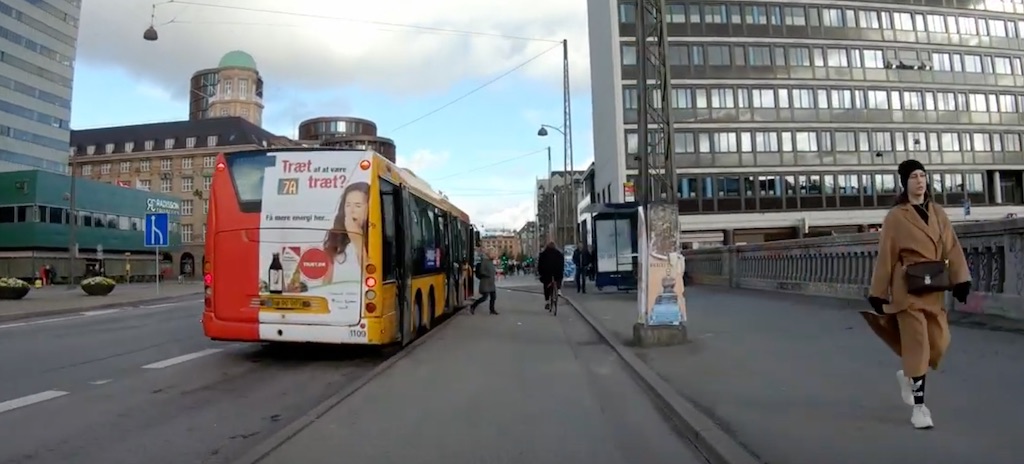
Bending the bike lane behind the stop
The bike lane can also bend behind protected public transport stops, as shown by this example from the Netherlands in 1953. Click on the image to view a video.
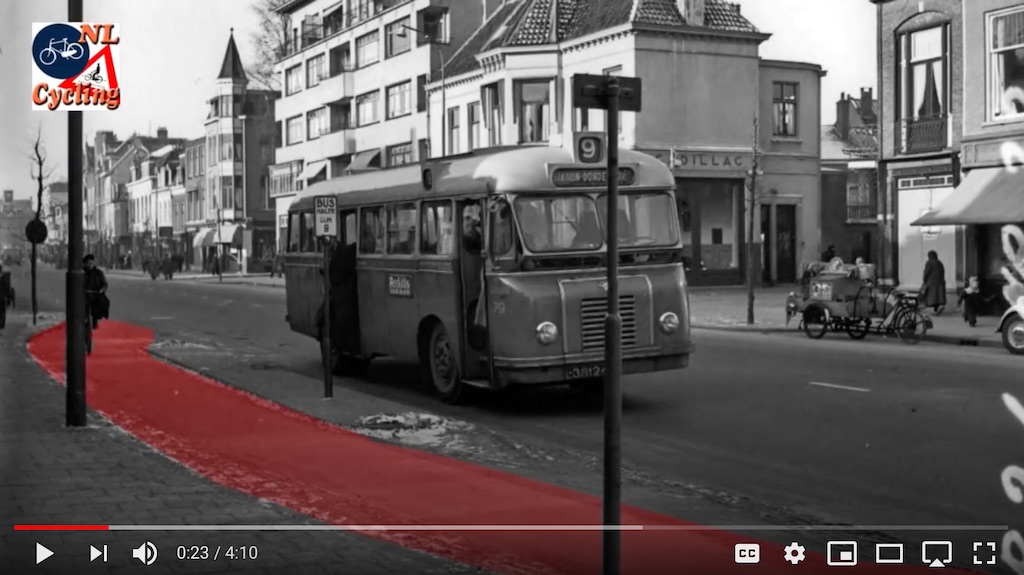
Such designs are still in use today in the Netherlands, on modern level-access protected tram stops:
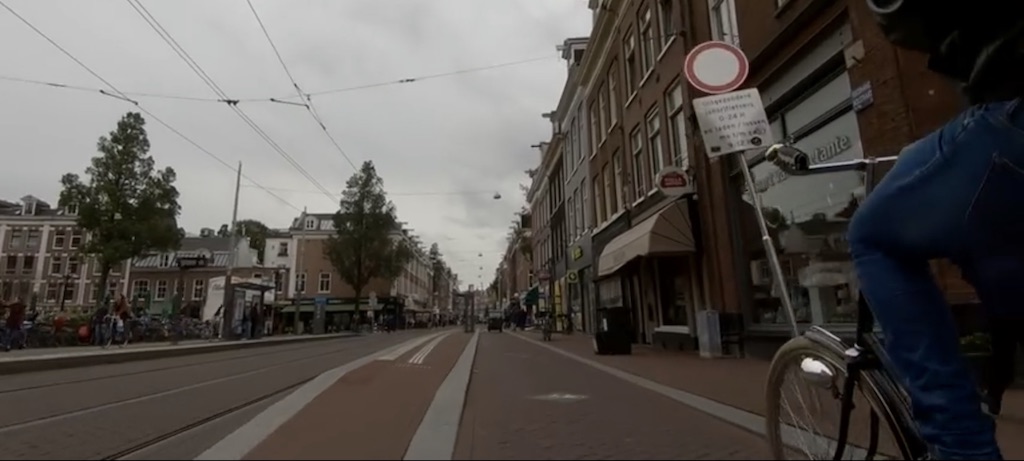
New Zealand also has protected bicycle lanes which bend behind protect public transport stops, as shown by this example in Auckland. The platform is wide enough to support a person, as can be seen in this cycle-by video on Facebook.
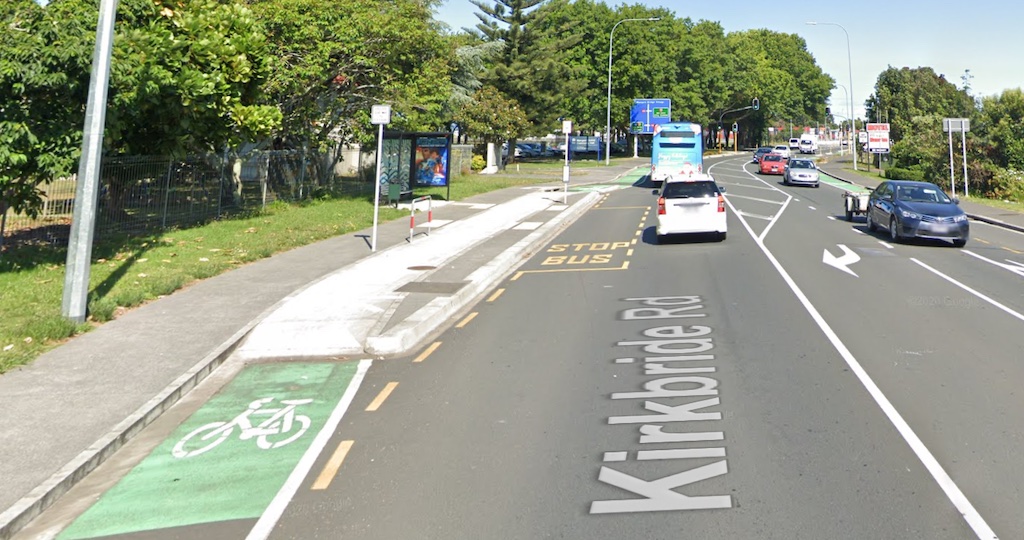
The example above is termed a ‘partial island design’, it’s used when there isn’t enough space for a ‘full island design’ as shown below. Streets Alive Yarra recommends the ‘partial island design’ for Melbourne’s tram-based shopping streets, while the state government chose to use the ‘boarding strip design’ for Carlisle Street (see above).
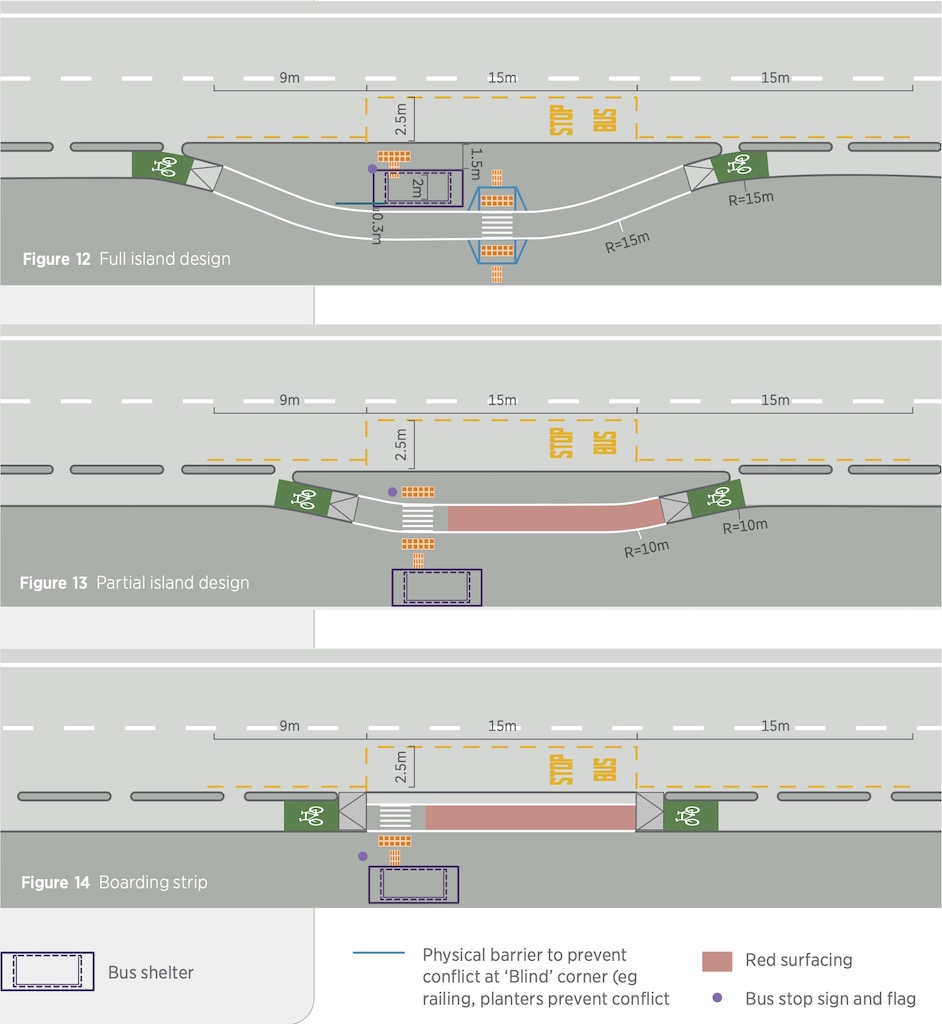
Trials
Level access tram stops combined with a protected bicycle lane (where cars can’t overtake trams) deliver protection from cars for tram passengers. Such designs can be trialled using low cost relocatable structures, as demonstrated in Toronto.
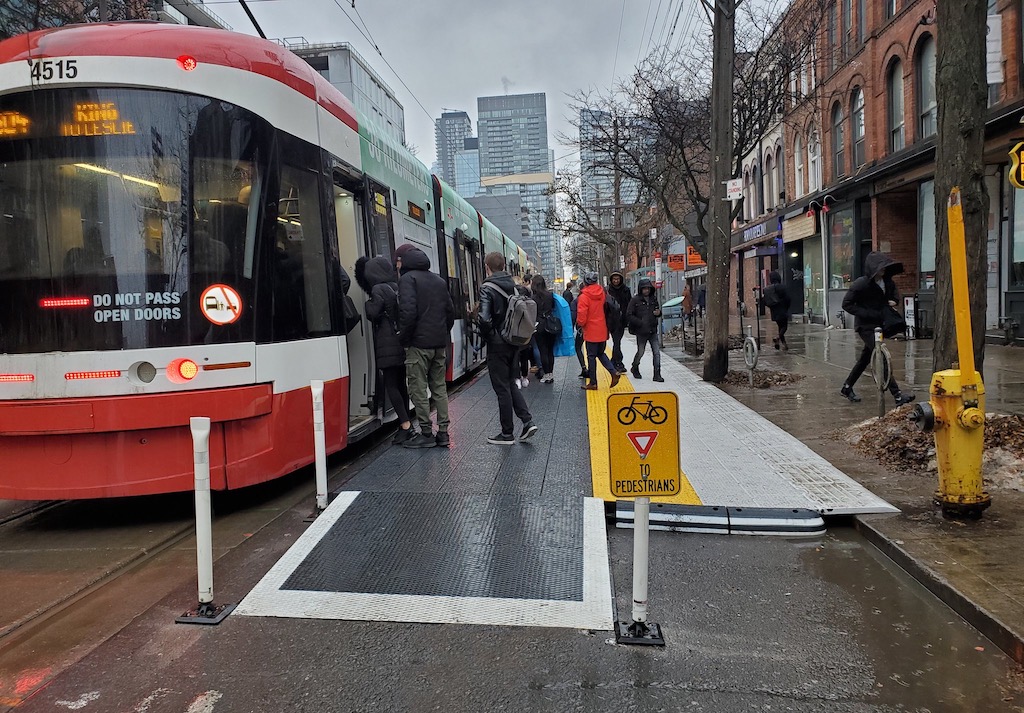
Summary
Tram stops in Yarra can be upgraded to be level access, and passengers can be protected from being hit by cars. The key is to require cars to follow behind trams, and to relocate parking to side streets.
Supporters
Supporters of protected public transport across greater Melbourne include the Public Transport Users Association (PTUA):

How you can help
You can help by appearing on the Streets Alive Yarra website as a champion for your local street, neighbourhood, or school.
